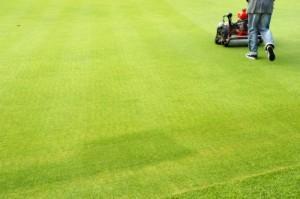
img source: freedigitalphotos.net
If you have a large yard, then you know how quickly the tree and shrub trimmings, grass clippings, autumn leaves and other yard waste pile up. While it’s relatively easy to bag all those raked leaves into 10 to 12 yard waste bags and place them out for municipal disposal, it’s not that green. Greening up your approach to yard waste reduces waste and offers you creative ways to reuse those green trimmings and plant matter. Try incorporating these ideas into your home landscaping.
Composting:
Composting at home can seem daunting for even folks with green thumbs, especially if you worry about what types of edibles you can incorporate into your compost pile, whether it will attract critters and so on. If you’re nervous about composting, yard waste makes an easy and less intimidating place to begin. You’ll need a composting unit, which you can either purchase or make yourself from an old trash can or four wood pallets.
Once you’ve got your bin, add some of your yard waste. Dried leaves and tiny wood chips make good composting matter. To get a rich soil media, add in green clippings such as coffee grounds, veggie scraps and grass clippings. Turn the scraps to mix them thoroughly, then add water until the whole thing looks like a wet sponge. Once a week, add more material and turn the compose pile. When the composted materials are dark brown and crumbly, they’re ready to be used.
“Recycling” Sod:
If you’re tearing up sod to create a new garden bed, outdoor patio or other home landscaping project, you can even compost that sod. Just place the sod, soil and all, into your compost bin with the grass side down. As you turn the compost weekly, turn the sod. The organic materials in your sod will decompose. If you don’t have a compost bin and want to recycle your sod, place all of the torn-up pieces in a pile. If you are afraid the grass might take root again, place a sheet of newspaper in between each piece of sod to offer a barrier. The grass and soil will decompose this way, but it can take much longer than it would in a traditional compost pile.
Of course, you can always use the lasagna mulch method and bypass cutting up the sod altogether. Find flat, broken-down cardboard boxes and wet them. Place the wet boxes over the area where you want to take up the sod. Cover the cardboard boxes with leaves, grass clippings or other organic matter. The boxes will smother the grass beneath, effectively killing it. The cardboard will decompose. You’ll have a nice, loose soil to work with that’s been naturally enriched by the yard waste — a two-fer!
Wood Chipping:
Wood chips can be added to compost or used as mulch. To turn cut branches and sticks into chips, you’ll need a chipper. Feed the wood through the chipper to get tiny squares of wood chips. Then use the chips to mulch around trees, shrubs and flower beds. Mulching helps the plants retain soil moisture longer, so you can water less frequently. Wood chips also work for landscaped paths too. If you have more wood chips than you can use, consider selling some or offering them to community gardens near you.
While you may not be able to compost, chip or recycle all of your landscape waste, you may find that you produce considerably less after adding in these methods. The savings on compost and mulch are a nice bonus to boot.

